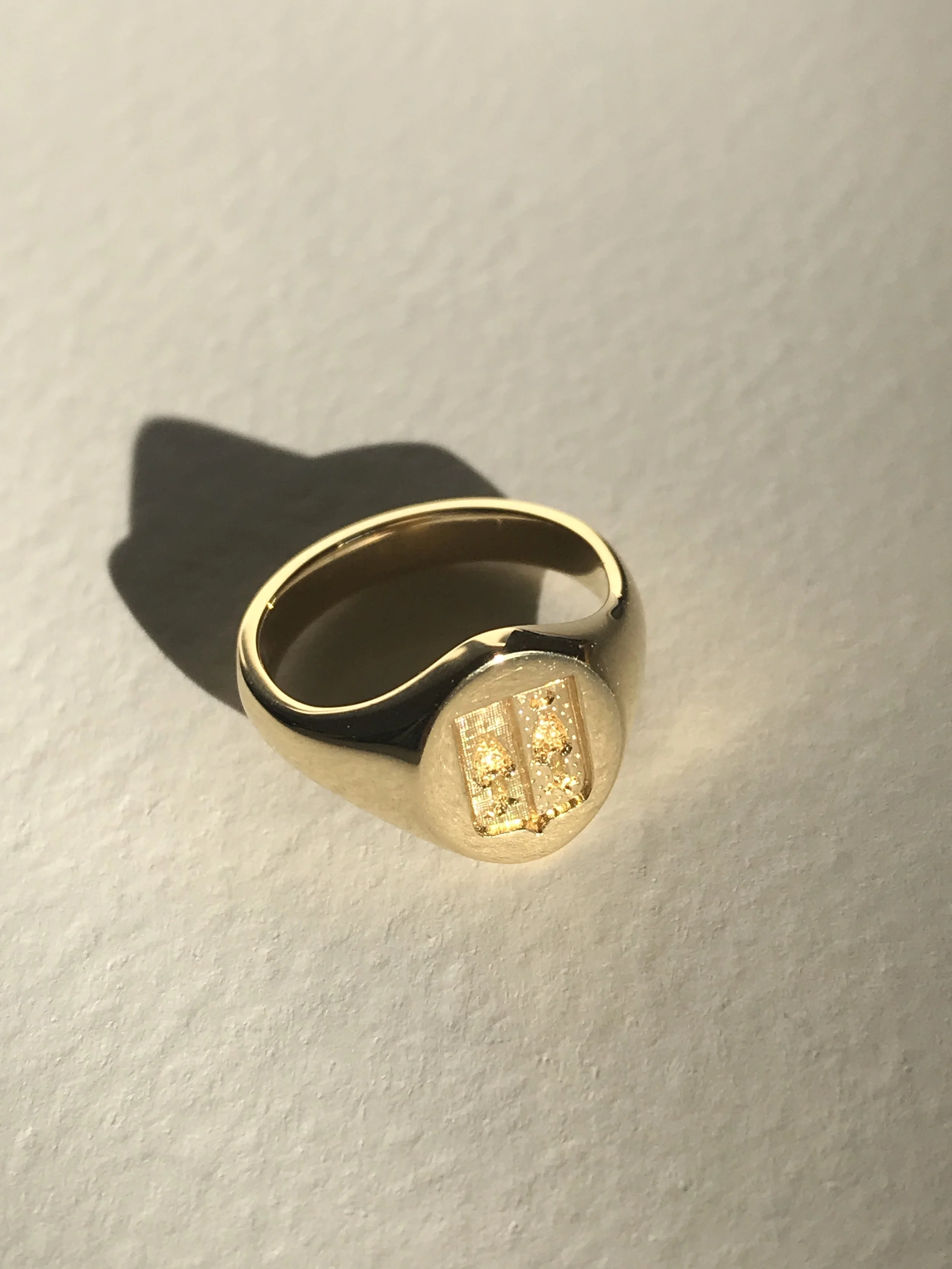A legacy of authenticity,
Originally signet rings were emblazoned with a family crest and they would frequently be used to stamp, or sign a document. The metal shapes would leave a permanent mark in any soft wax or even clay and this would be placed onto a variety of legal documents. Some of the most important documents in history have been stamped with a signet ring. In its day the stamp of a ring was seen as more authentic than a signature.
The signet ring was used as long ago as 3500 BC. Records show the people of Mesopotamia used cylindrical seals as marks of authenticity. This is really the origin of the corporate seal which is still used by some companies today.
Every ring was unique, the markings usually included the family crest but there would always be a significant mark which personally identified the ring holder. Some of the rings were simple monograms or icons which were associated with the most important families. All rings were reverse engineered to ensure that the design came out properly when they were stamped on a document. Of course, this level of detail also ensured the rings were expensive and very difficult to copy.




